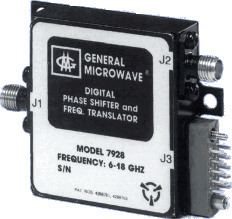 | ||
A phase shift module is a microwave network module which provides a controllable phase shift of the RF signal. Phase shifters are used in phased arrays.
Contents
Classification
Figures of Merit
References
Phase shift module Wikipedia(Text) CC BY-SA
 | ||
A phase shift module is a microwave network module which provides a controllable phase shift of the RF signal. Phase shifters are used in phased arrays.